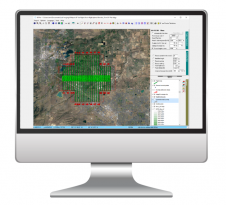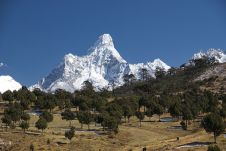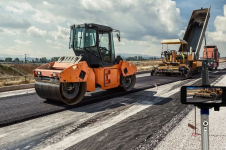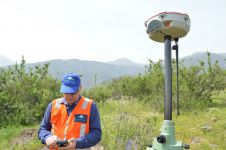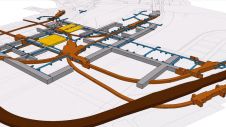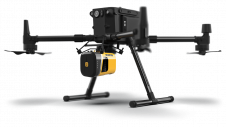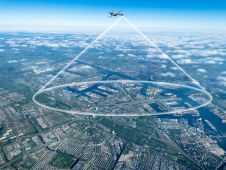Geospatial Techniques Must Serve More Fields and Applications
'188金宝搏特邀' invited Bisheng Yang, vice-director of LIESMARS at Wuhan University, to share his thoughts on the present and future of the geospatial industry. Here, he provides his views on the key market trends, technology drivers and challenges, and the impacts of COVID-19 and climate change on his organization and the sector in general.
What has been the impact of COVID-19 on your business?
COVID-19 has changed the way I work and the way I communicate with researchers around the world. On the one hand the increase in online meetings is a bit exhausting, but on the other the pandemic has prompted me to think even more about the integration of geomatics with other disciplines. After all, the fight against COVID-19 is a hugely important issue for researchers around the world, and as geospatial scholars we should use our knowledge to serve society. For example, COVID-19 has provided a boost for autonomous solutions in logistics, which calls for technologies such as high-precision maps, indoor positioning and object detection. We are experts in these technologies, so we should actively invest and seize opportunities to create new value for the geographic information industry.
What do you regard as the key market trend in the years ahead?
在过去的几年中,地理community has actively participated in the prevention and control of the spread of COVID-19, making full use of modern technologies such as big data, cloud computing and the Internet of Things (IoT) to provide users with automatic monitoring services such as epidemic monitoring analysis, early warnings and traffic monitoring. In the Chinese market, one key commercial trend is the construction of new infrastructure, including 5G, ultra-high-voltage and high-speed intercity railways, charging for electric vehicles, big data centres, artificial intelligence and the Industrial Internet. As an important foundation of this new infrastructure construction, new geospatial techniques – such as new imaging sensors with robots and artificial intelligence (AI) for underground infrastructure inventory, digital twins for smart cities, and ubiquitous positioning and navigation with low-cost sensors – will receive a boost in the years ahead.
Which technological driver do you expect to be most important in the coming years?
Spatial location/sematic computation is key for location intelligence. It undoubtably stimulates the development of low-cost, lightweight, energy-saving, small-sized sensors for geospatial information collection, computation and understanding, resulting in AI-based techniques for geospatial digital twins, robot-based intelligent mapping techniques and spatial probe techniques for underground utilities. On the one hand, new techniques should be aimed at greatly improving efficiency and accuracy and reducing the cost and weight of geospatial mapping sensors and software. On the other hand, geospatial techniques must serve more fields and applications, such as energy, transportation and public health, in order to provide intelligent solutions for governments and end-users.
What do you see as the main challenge in the near future?
In my view, there will be several main challenges in the near future. One issue is that COVID-19 will continue to restrict field trips and offline conferences, thus limiting knowledge sharing between the industrial community and the academic community. Secondly, there is a shortage of efficient and intelligent geospatial software or solutions to meet the real-time requirements related to public health in the context of COVID-19; geospatial software or solutions must provide real-time services with fresh geospatial information to the user, requiring new geo-AI theories and methods. The third challenge relates to the shortage of intelligent actions and decisions based on cutting-edge geospatial techniques for new fields. This requires a shift in the geospatial community from Earth surface observation to underground, space and sea exploration.
Due to the climate crisis, companies and organizations urgently need to contribute to a safer and more sustainable world. What is your vision on this?
The low-carbon, ‘green’ economy has become a global trend. Approximately 30 of the world’s countries have currently proposed carbon-neutrality goals, and around a hundred more countries are preparing to propose them. The geospatial community should make its own contribution to a safer and more sustainable world. Geospatial companies and organizations should focus on AI to better understand Earth observation and remote imagery, for geospatial big data analysis, geospatial location intelligence to push the development of geospatial techniques for the achievement of the UN’s Sustainable Development Goals, carbon emission and storage, and a green, low-carbon economy. On the other hand, geospatial companies and organizations should put more emphasis on developing efficient solutions to monitor natural disasters (e.g. landslides), the urban microclimate (e.g. heat islands) and key infrastructure risks (e.g. high railways) in order to minimize the loss of life and property.
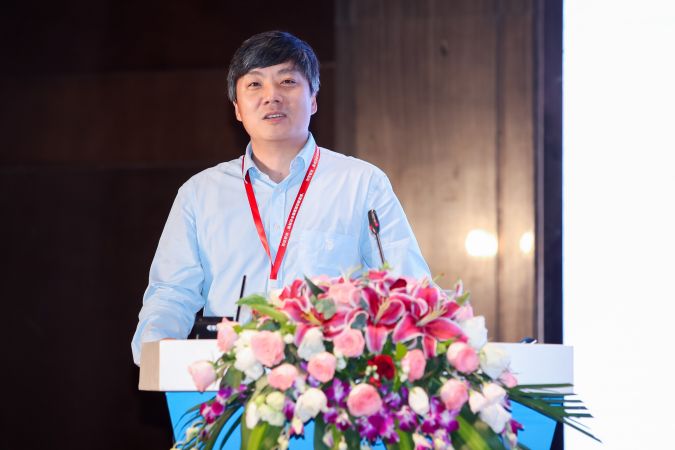
About Bisheng Yang
Dr Bisheng Yang is a professor of geomatics engineering and vice-director of the State Key Laboratory of Information Engineering in Surveying, Mapping, and Remote Sensing (LIESMARS) at Wuhan University, China. His research expertise includes laser scanning and photogrammetry, point cloud processing and GIS applications. He has received numerous national and international academic awards including the Carl Pulfrich Award (2019).
Make your inbox more interesting.Add some geo.
Keep abreast of news, developments and technological advancement in the geomatics industry.
Sign up for free














